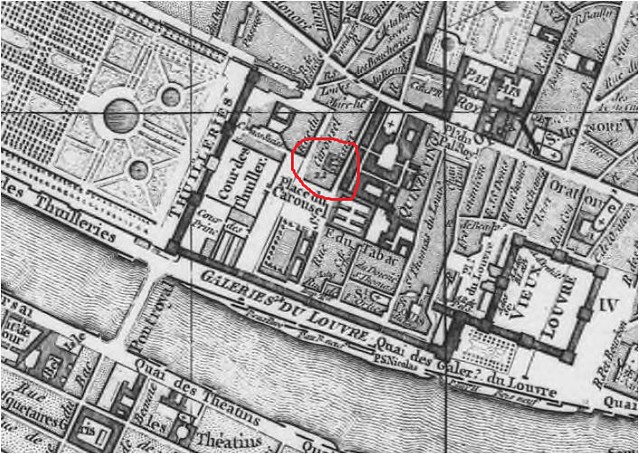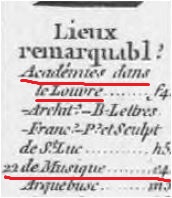Huck
Liberte

Sauveur/Marechal Mythologie 1793 / with cat and broken column it looks little bit like Fortitudo

66-cards divination deck 1790.
The red hat on a stick (on both pictures) is possibly "the red hat of the sans-culottes" (I don't know it for sure)
In this context the following facts have to be observed:
The following is a part of the new calendar of Sylvain Marechal 1788, in which Marechal replaced Christian saints with other well known persons ... for instance Shakespeare and Platon and Socrates.
Yesterdays I wrote to this theme:
This is a part of the gallica text:

It's announced as the first year of "Raison" (reason). Marechal had opened a new aera with it. The first sure date of its known existence is the 7th of January 1788.

7th of January was before the day of the Tyles in Grenoble (for some the start of the French revolution in June 1788) and the storm on the Bastille in July 1789 (for the majority
the begin of of the French revolution.
French wiki ...
https://fr.wikipedia.org/wiki/Calendrier_républicain
... gives the development of the "Calendrier republicain" in this way:
In short: After the storm on the Bastille started the "aera of Liberty". It had only a few years.

Sauveur/Marechal Mythologie 1793 / with cat and broken column it looks little bit like Fortitudo

66-cards divination deck 1790.
The red hat on a stick (on both pictures) is possibly "the red hat of the sans-culottes" (I don't know it for sure)
In this context the following facts have to be observed:
The following is a part of the new calendar of Sylvain Marechal 1788, in which Marechal replaced Christian saints with other well known persons ... for instance Shakespeare and Platon and Socrates.
Yesterdays I wrote to this theme:
Sylvain Maréchal, co-author of Jacques Grasset Saint-Sauveur between 1784-93, has this detail in his biography:
So also Marechal had his ideas to a new calendar, and that precisely in the year 1788 (same year as the "Etrennes nouvelles de l'horoscope de l'homme et de la femme").His critique of both religion and political absolutism (Livre échappé du déluge - "Book Salvaged from the Flood", a parody of the Bible) and his atheism caused him to lose his position at the College; Maréchal was forced to live off his literary output. In 1788, he was sentenced to four months in prison for publishing the Almanach des Honnêtes Gens ("Honest Man's Almanac"). The months were given names numbers one through twelve (for example, March is the first month, listed as "mars ou princeps", while February is "février ou duodécembre". The calendar also replaced the usual figures of a calendars of saints with famous characters (such as Blaise Pascal). (Later editions of the Almanach used the French Republican Calendar.)
http://gallica.bnf.fr/ark:/12148/bpt6k48116c.swf.f3.langFR
This is a part of the gallica text:

It's announced as the first year of "Raison" (reason). Marechal had opened a new aera with it. The first sure date of its known existence is the 7th of January 1788.

7th of January was before the day of the Tyles in Grenoble (for some the start of the French revolution in June 1788) and the storm on the Bastille in July 1789 (for the majority
the begin of of the French revolution.
French wiki ...
https://fr.wikipedia.org/wiki/Calendrier_républicain
... gives the development of the "Calendrier republicain" in this way:
Création et utilisation
L’invention de ce calendrier se fit progressivement. Dès le lendemain de la prise de la Bastille (14 juillet 1789), l'usage était apparu d'appeler 1789 « l’an I de (l’ère de) la Liberté » ; les mois et jours étaient restés les mêmes, cependant[réf. nécessaire]. Le 21 septembre 1792, les députés de la Convention, réunis pour la première fois, décidèrent à l'unanimité par acclamation de l'abolition de la royauté en France et le lendemain 22 septembre 1792 (jour anniversaire de l'adoption du premier article de la Constitution de 17892), la Convention nationale décréta que « Tous les actes publics sont désormais datés à partir de l'an I de la République ». C’est le 20 septembre 1793 que Charles-Gilbert Romme, rapporteur du groupe de travail nommé par le Comité d'instruction publique, présente devant la Convention (le Comité lui-même ayant eu droit à une présentation six jours auparavant) ce qui deviendra bientôt le calendrier républicain. Après certains ajustements, il entra en vigueur à partir du lendemain du décret de la Convention nationale du 14 vendémiaire an II (5 octobre 1793)3,Note 1.
La nomenclature des mois et des jours continua d’évoluer dans les mois qui suivirent. Le décret fut refondu le 4 frimaire an II (24 novembre 1793), qui donna sa forme définitive au calendrier. Ce dernier décret abolit l'« ère vulgaire » pour les usages civils et définit le 22 septembre 1792 comme étant le premier jour de l'« ère des Français ». Pour les années suivantes, le premier jour de l'année serait celui de l'équinoxe vrai à Paris (ce qui tombait entre le 22 et le 24 septembre selon le calendrier grégorien). La première année est l'an I, il n'y a donc pas d'année zéro.
In short: After the storm on the Bastille started the "aera of Liberty". It had only a few years.













